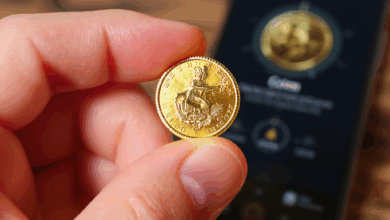Exploring the Future – Innovative Techniques in Cryptocurrency Market Predictions

A New Era of Prediction: Unpacking Cryptocurrency Market Techniques
What if I told you that the future of cryptocurrency investment hinges not just on market trends but on how we interpret and predict these trends? As I reflect on my own experiences in navigating the choppy waters of crypto trading, I often find myself grappling with the question: How can we truly anticipate market movements?
In a space that changes with the flick of a digital switch, it’s evident that traditional methods often fall short. The recent introduction of advanced machine learning models has sparked a new wave of hope and intrigue in the crypto community. I remember the first time I came across a hybrid model combining attention-based Transformers with Gated Recurrent Units (GRUs). It felt like discovering a secret map in a treasure hunt—suddenly, the vast unpredictability of the market seemed a little more navigable.
The Synergy of Machine Learning and Market Predictions
With the rise of technology, why not use it to our advantage? This is where hybrid deep learning models come into play. By effectively capturing both short-term fluctuations and long-term trends in market data, these models enhance predictive accuracy significantly. Can you imagine being able to predict price movements with greater reliability? It’s almost like having a crystal ball at your disposal.
But there’s more beneath the surface. The integration of AI-powered sentiment analysis—a technique that evaluates social media and news sentiment—adds another layer of complexity. Suddenly, emotions, collective sentiments, and even memes play a pivotal role in shaping our investment strategies. I often ponder, how much should we let public sentiment dictate our decisions?
Reinforcement Learning: Evolving Trading Strategies
As I delve deeper, I encounter reinforcement learning—a fascinating concept where AI algorithms learn from historical data to optimize trading strategies. The adaptability of these systems can be seen as the ultimate survivor instinct in the ever-changing crypto jungle. What if our trading strategies could evolve just as rapidly as the market itself? This idea excites me, but it also raises questions about the human touch in trading.
Practical Insights for the Curious Investor
For anyone looking to navigate this complex landscape, here are a few insights I’ve gathered through both research and personal experience:
1. Diversify Data Sources: Relying solely on historical price data can be limiting. Incorporate sentiment analysis and macroeconomic indicators to form a more comprehensive understanding.
2. Regular Model Evaluation: The market is dynamic; your models should be too. Continuously assess and update your predictive models to reflect current trends.
3. Risk Management is Key: Use predictive models as part of a broader risk management strategy. It’s essential to balance data-driven insights with traditional analysis methods.
4. Stay Informed: The world of AI and machine learning is ever-evolving. Keeping abreast of new developments can provide you with fresh tools and techniques for better predictions.
As I write this, I find myself both excited and apprehensive about the future of cryptocurrency market predictions. The blend of advanced technology and human intuition could shape a new era of trading. But I can’t help but ask: In our quest for accuracy, are we sacrificing the very essence of what makes trading a human experience?
In the end, the journey into cryptocurrency prediction techniques is not just about mastering algorithms; it’s about understanding the pulse of the market—and perhaps, our own motivations as traders.
The Role of Behavioral Economics in Cryptocurrency Predictions
Behavioral economics delves into the psychological factors influencing economic decisions, and when applied to cryptocurrency, it offers a fascinating lens through which we can understand market movements. As I reflect on my own trading experiences, I realize that emotions—fear, euphoria, and even FOMO (fear of missing out)—often dictate our actions more than any predictive model.
Understanding Market Sentiment
Market sentiment is a collective emotional response to news and events, and it plays a crucial role in cryptocurrency trading. For instance, during a market downturn, investors often panic sell, driven by fear. Conversely, during a bull run, euphoria can lead to irrational exuberance, where prices soar beyond logical valuation.
To effectively gauge market sentiment, one might consider:
- Social Media Analysis: Platforms like Twitter and Reddit can offer real-time insights into public sentiment. Tools such as sentiment analysis software can help quantify this data, providing a clearer picture of overall market mood.
- News Aggregation: Keeping tabs on cryptocurrency-related news from multiple sources can help identify trends and shifts in sentiment. A sudden influx of negative news can precede a market drop, while positive developments often signal potential gains.
Behavioral Biases to Watch Out For
Understanding common behavioral biases can also improve prediction accuracy. Here are a few to consider:
- Anchoring: Many traders tend to anchor their decisions based on the first piece of information they receive. For example, if Bitcoin was valued at $60,000 last month, a trader might irrationally focus on that number instead of current market conditions.
- Confirmation Bias: Investors often seek information that confirms their existing beliefs, ignoring contradictory data. This can lead to poor decision-making, especially in volatile markets.
- Herd Behavior: The tendency to follow the crowd can amplify market movements. If many traders are buying into a specific coin, others might jump in without conducting their own analysis, leading to inflated prices.
Practical Steps to Mitigate Bias
-
Diversified Information Sources: Relying on a single news outlet or social media platform can lead to skewed perspectives. Instead, engage with a variety of sources to gain a well-rounded understanding.
-
Regular Self-Reflection: Before making significant trading decisions, take a moment to reflect on your motivations and emotional state. Are you acting out of fear or excitement? This pause can help clarify your decision-making process.
-
Set Clear Criteria: Establish specific criteria for entering and exiting trades based on data, rather than emotions. This helps reduce the influence of biases and promotes disciplined trading.
Integrating Quantitative Models with Human Intuition
While advanced machine learning models offer valuable insights, there’s something inherently human about trading that algorithms can’t fully replicate. The interplay between quantitative analysis and human intuition creates a more holistic approach to cryptocurrency predictions.
Developing a Hybrid Approach
-
Combining Data with Intuition: Leverage machine learning predictions alongside personal market insights. For example, if a model suggests that Ethereum’s price will rise, consider your own experiences with Ethereum’s market history and current events before making a decision.
-
Scenario Analysis: Envision various market scenarios based on both quantitative data and qualitative insights. What happens if a major exchange experiences a security breach? How might that affect market sentiment and prices? Thinking through these scenarios can help prepare for unpredictability.
-
Feedback Loops: Create a feedback mechanism to assess the accuracy of your predictions. Maintain a trading journal where you document your thought process behind each trade, noting how your intuition aligned with the model’s predictions. This practice can illuminate patterns in your decision-making and help refine your approach.
Real-World Applications of Hybrid Models
Consider the case of a trader who uses machine learning to analyze historical price data while also paying attention to community sentiment on forums like Reddit. By integrating both perspectives, they may spot a potential undervalued coin. This hybrid strategy allows them to capitalize on opportunities that pure data-driven models might overlook.
Expert Tips for Combining Approaches
- Stay Agile: The cryptocurrency market is notorious for its rapid changes. Being open to adjusting your strategies based on new data and insights can provide a competitive edge.
- Balance Emotional Intelligence with Data: Recognize when emotions are guiding your decisions and strive to counterbalance them with factual data.
- Collaborate with Peers: Engaging with fellow traders can enhance your understanding of market dynamics. Discussing insights and predictions can lead to new perspectives and shared learning.
By weaving together behavioral economics, quantitative models, and human intuition, traders can navigate the complexities of the cryptocurrency market with greater confidence and adaptability. As I ponder the evolving landscape, I can’t help but wonder: Are we on the brink of a new paradigm in trading, where technology and humanity coexist harmoniously?
As we explore the future of cryptocurrency prediction techniques, the most valuable lesson might be to embrace both the analytical power of AI and the nuanced understanding of human emotions, fostering a more comprehensive approach to investment.

Summary of Key Insights
Reflecting on our exploration of cryptocurrency market prediction techniques, we’ve uncovered a rich tapestry of ideas that intertwine technology, psychology, and human intuition. Here’s a concise breakdown of the major themes:
The Evolution of Prediction Techniques
- Machine Learning Models: Advanced algorithms, particularly hybrid deep learning models, can significantly enhance the accuracy of predictions by interpreting both short-term fluctuations and long-term trends.
- Sentiment Analysis: Understanding market sentiment through social media and news can provide crucial insights into trader behavior, influencing investment decisions.
- Behavioral Economics: Emotional factors often dictate market movements, making it essential to recognize and mitigate biases in trading strategies.
Practical Steps for Investors
- Diversify Data Sources: Incorporate varied inputs like sentiment analysis to inform your trading decisions.
- Regular Model Evaluation: Continuously assess your predictive models to adapt to changing market conditions.
- Risk Management: Use predictive models as part of a broader strategy to balance insights with traditional analysis.
Next Steps for the Curious Investor
As we ponder the future of cryptocurrency trading, consider these actionable steps to deepen your understanding and improve your strategies:
Engage with Technology and Community
- Explore Machine Learning Tools: Familiarize yourself with accessible machine learning platforms that allow you to experiment with prediction models.
- Join Online Communities: Participate in forums or groups focused on cryptocurrency where you can exchange insights and stay updated on trends.
- Conduct Simulations: Practice trading with simulated environments to test your strategies without financial risk.
Continuous Learning and Adaptation
- Stay Informed: Follow developments in AI and behavioral economics to keep your skills sharp.
- Reflect on Your Trades: Maintain a trading journal to analyze your decisions and identify patterns in your trading behavior.
Final Thoughts
In the fast-paced world of cryptocurrency, the marriage of advanced predictive techniques and human insight may very well define the next wave of successful trading. As you venture into this complex landscape, remember that your unique perspective and experiences are invaluable.
As we stand on the brink of this new era, I leave you with a question to ponder: How will you blend technology with your intuition to navigate the ever-evolving cryptocurrency market?
Embrace the journey, and let curiosity guide your path.





